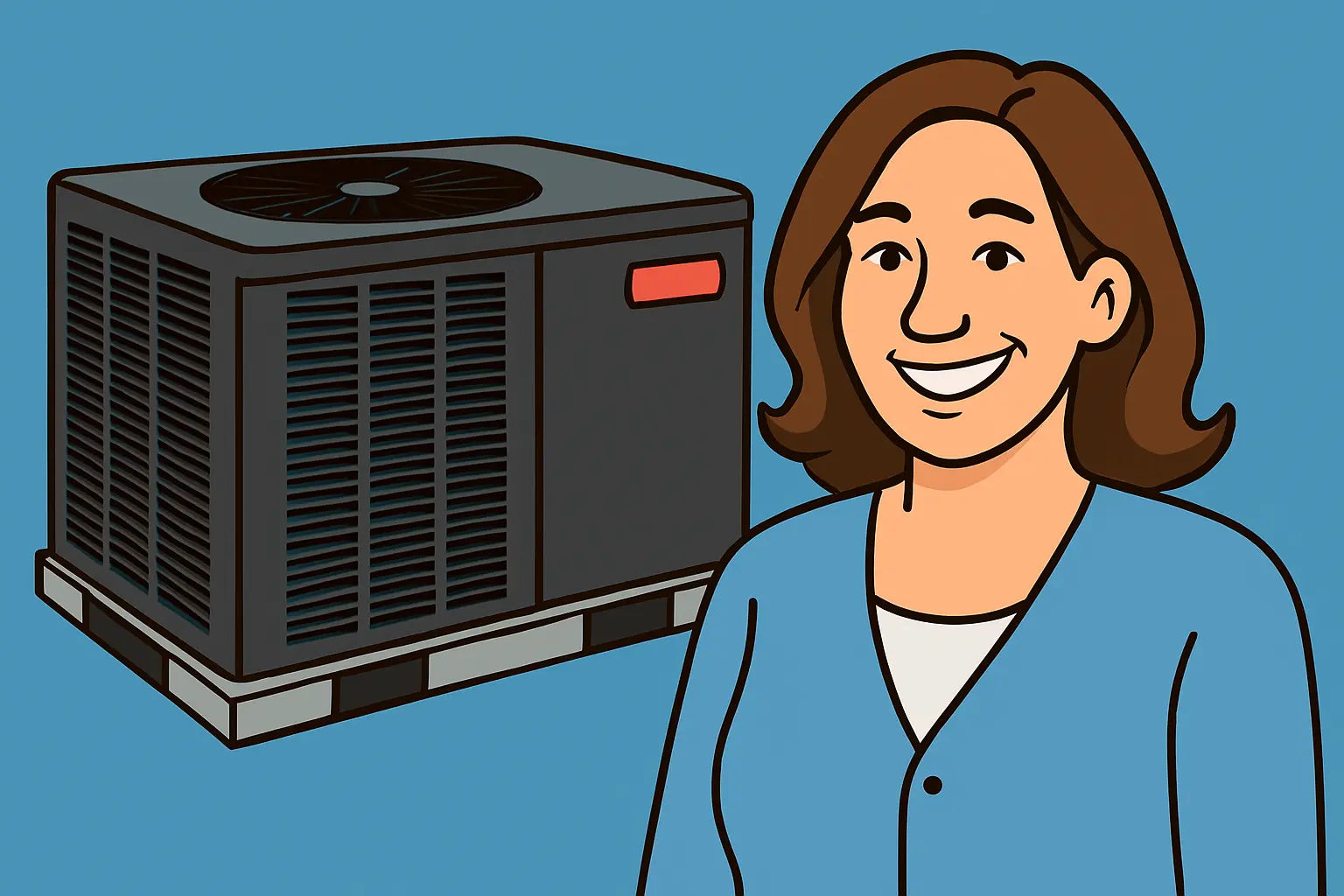Hey, it’s Samantha! 🌞
Let’s get real—installing your Goodman Horizontal Air Conditioner 3-Ton GPCH33631 sounds straightforward until you realize a tiny misstep can turn a $3,000 investment into a headache. I’ve seen it too often: uneven pads, leaky ducts, wrong breaker sizes, and mishandled R-32 refrigerant. Today, we’re going to tackle the mistakes that can cost you cooling power, efficiency, and possibly your warranty.
1. Installing on an Uneven or Unstable Pad
First things first: if your unit isn’t level, you’re asking for trouble. Horizontal packaged units like the GPCH33631 depend on proper drainage for condensate and even airflow.
Common mistakes:
-
Placing the unit directly on soil or gravel without a stable pad.
-
Installing on a surface that slopes toward the house instead of away from it.
-
Using a pad that’s too small or too soft, which can shift under the AC’s weight.
The fix? Always use a sturdy, level concrete or composite pad sized for your 3-ton unit. A level base ensures proper drainage, prevents coil flooding, and avoids compressor stress that reduces cooling output.
2. Skipping Proper Ductwork Alignment and Sealing
Airflow is king in cooling efficiency. Even a perfect AC unit will underperform if your ducts aren’t properly aligned or sealed.
Common mistakes:
-
Connecting ducts with gaps or loose joints.
-
Using old, crushed, or undersized ducts that restrict airflow.
-
Failing to insulate ducts running through attics or crawl spaces.
These errors can reduce cooling efficiency by 20–30% or more. Using high-quality metal or flexible ducts with proper sealing tape ensures all cooled air reaches your rooms. The EPA’s ENERGY STAR maintenance guide emphasizes the importance of leak-free ducts for efficiency and lower energy bills.
3. Electrical Mistakes That Can Fry Your Efficiency
Electrical issues are sneaky. A miswired unit can trip breakers, underperform, or worse—damage components.
Common mistakes:
-
Using an undersized breaker or shared circuit instead of a dedicated 208–230V single-phase line.
-
Loose connections or improperly secured wiring.
-
Ignoring manufacturer’s electrical specs, especially for R-32 systems.
Double-check voltage and amperage requirements. I recommend consulting the unit’s manual and, if unsure, bringing in a licensed electrician. Poor electrical setup not only reduces cooling power but can void your warranty.
4. Mishandling R-32 Refrigerant
R-32 is wonderful for efficiency and environmental impact, but it’s an A2L mildly flammable refrigerant. Mishandling can cause leaks or worse.
Common mistakes:
-
Using older R-410A gauges or hoses not rated for R-32.
-
Ignoring proper ventilation when handling lines.
-
Attempting to top off refrigerant without proper charging knowledge.
Always follow safe handling practices and refer to a trusted source like ACHR News’ R-32 guide if you’re not a certified tech.
5. Neglecting Condensate Drain Setup
Horizontal units like the GPCH33631 rely on a properly installed condensate drain. Skip this, and you risk water backing up into the system or even indoor leaks.
Common mistakes:
-
Routing the drain uphill or with sharp bends that trap water.
-
Skipping a condensate trap where required.
-
Using PVC pipe that’s too narrow, causing clogs.
Solution: Ensure the drain slopes downward, is clear of debris, and has the correct trap and diameter. This keeps your AC running smoothly and prevents water damage.
6. Improper Thermostat Placement and Setup
Even if everything else is perfect, a poorly located thermostat can ruin your comfort.
Common mistakes:
-
Installing near direct sunlight or heat-producing appliances.
-
Mounting too close to doors or vents that misread room temperature.
-
Using outdated thermostats that can’t handle your R-32 unit’s efficiency features.
The fix: install the thermostat on an interior wall, away from sunlight, drafts, or heat sources, and consider a smart thermostat that works with your horizontal AC. Consumer Reports’ smart thermostat guide is a great resource for picking a compatible model.
7. Forgetting Warranty and Registration Rules
You’ve invested in a top-notch unit—don’t sabotage your coverage. The GPCH33631 requires registration within 60 days to validate the 10-year parts warranty.
Common mistakes:
-
Failing to register on time.
-
Not keeping records of installation and maintenance.
-
Using non-authorized parts for repairs or modifications.
The Federal Trade Commission’s consumer warranty guide is a helpful resource to understand what protections you have and how to maintain them.
8. Failing to Follow Seasonal Maintenance
Installation is just the beginning. Neglecting routine care can undo even a perfect setup.
Tips to avoid cooling power loss:
-
Change filters every 1–3 months.
-
Clean coils before peak cooling season.
-
Inspect electrical connections annually.
-
Verify refrigerant pressure and airflow before summer heat sets in.
-
Trim vegetation around the unit to maintain airflow.
Goodman’s maintenance tips are excellent for homeowners who want to take a hands-on approach without risking system damage.
Samantha’s Send-Off
Installing a Goodman GPCH33631 might feel intimidating at first, but avoiding these mistakes keeps your cooling consistent and your unit efficient for years. Remember, even the smallest misstep—like an uneven pad or clogged duct—can make your AC work harder than it needs to, draining efficiency and comfort.
Treat your unit well, follow safe R-32 handling practices, and stay on top of maintenance. If you’re ever in doubt, don’t hesitate to call a certified technician.
Need more advanced troubleshooting tips for this unit? Check out: How to Troubleshoot Low Cooling Output in the GPCH33631.
Stay smart, stay cool, and enjoy that crisp, even air flowing through your home!
— Samantha, Home Comfort Advisor 🌬️







